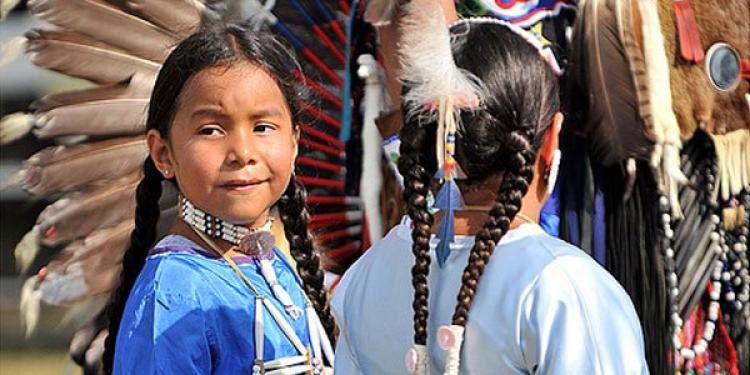Building Casinos Improves American Indians’ Children’s Health Condition
Posted: March 13, 2014
Updated: October 4, 2017

A recent study finds out that building casinos on California tribal lands, helped American Indians to improve not only their income, but also the health of their children, more specifically their obesity rates dropped.
The main goal of the researchers was to prove that more investment in communities, for example more casino profits, improves drastically the social and health status among young population.
Dr. Neal Halfon, commented for Reuters Health: “The casino is serving as a proxy. If we had some kind of big syringe, and we inject money into a community, it does change the odds. Here it lowered obesity.”
Online gambling in the US state of California is still not allowed, therefore land-based casinos are extremely profitable for the Native American tribes.
Dr. Halfon is the director of the Center for Healthier Children, Families and Communities at the University of California and he was not directly part of the research. However, he prepared the additional editorial in the Journal of the American Medical Association.
Study objective
Building casinos helped American Indians to improve the health of their children
• 48% of American Indian youth in California is either overweight or obese
• UNICEF ranked USA 26 out of 29 developed countries on children’s overall well-being in 2013
• The districts that have American Indian students, which opened casinos, achieved 2.5% drop in kids’ overweight or obese
Dr. Halfon explained in the editorial: “An enormous loss of human potential results from unsafe, uncertain, stressful childhood environments. A casino in every neighborhood is not the answer, but increasing family income and removing other pressures that reduce the capacity of families to invest in their children should be part of the solution.”
The lead author Jessica C. Jones-Smith commented for Reuters Health that American Indian children have inexplicably high rates of obesity. In fact, the estimate shows that around 48% of the youth is either overweight or obese, which is 1 ½ more likely to be overweight than other American children.
Dr. Jones-Smith, who is from the Johns Hopkins Bloomberg School of Public Health, and her team used statistics from the US Census and California physical fitness programs in order to measure the impact, which incoming funds into a community have on its young population.
Research process
What the researchers did was to examine the heights and weights of American Indian children between 7-18 years old, who attend schools in the California public school districts where there are tribal lands. Students, who were considered overweight, were the ones whose weight was in the 85th percentile or above on the pediatric growth chart.
The next step of the research involved examining the changes in the community after some of them either built or upgraded existing casinos between 2001-2012.
117 public school districts were examined and 57 of them either opened or expanded casinos. 24 of the remaining districts already had casinos and did not expand and 36 didn’t have any.
Dr. Jones-Smith reported some of the results and it appeared that in the districts, which opened or expanded casinos, an average of 13 slot machines/resident were added. This change was related to the positive effect on the young population and the 2.5% drop in the proportion of them, who were overweight or obese.
She added: “We weren’t trying to weigh in on whether casinos should be held up as an example of economic development. Instead, we were trying to isolate the impact of economic resources on kids’ health.”
Potential reasons for the drop number of overweight children
Despite the study, there are still not completely proven reasons why the overweight rates are dropping in these areas, which opened casinos, following US gambling laws.
Still, Dr. Jones-Smith and her team provided some possibilities. They suggested that one reason may be the increase in the annual income by $7,000/resident. Therefore, perhaps parents can afford to buy and prepare healthier meals for their children.
Jones-Smith added that according to the federal law, casinos’ profits should also be used for supporting their communities or make donations. Therefore, tribes often use the money to build various recreation centers and parks. These places are used mainly by children, who play different sports, which leads to healthier body condition.
Going back to Dr. Halfon, he mentioned that this study, along with others is: “demonstrating the health benefits of alleviating poverty are particularly important given the growing income inequalities, persistently high rates of childhood poverty and stagnant wage growth in families with young children.”
He noted additionally that UNICEF ranked USA 26 out of 29 developed countries on children’s overall well-being in 2013.
He said: “All we have to do is look at other nations and see what they do to raise the children out of poverty.”
Dr. Halfon also commented: “Many of these countries are spending the same overall on health and social programs. They spend it earlier in the lifespan so they’re launching their children into a healthy trajectory, rather than waiting until their adults are burdened with lots of chronic health problems and having to pay for rescue care.”












